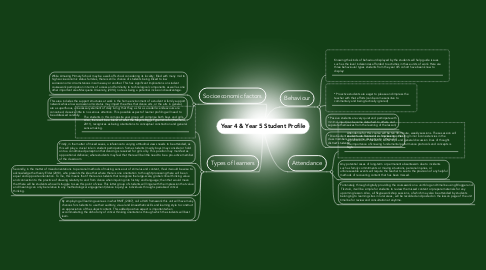Year 4 & Year 5 Student Profile
by Zteven Whitty

1. Types of learners
1.1. The students in this composite year group will comprise both boys and girls. Also, there will be a blend of what the Meyers-Biggs Type Indicator (Reinhold, 2011), recognizes as being orientations to conceptual construction and general sense-making.
1.2. Firstly, in the matter of mixed sexes, a reference to varying attitudinal views needs to be attended, as this will play a crucial role in student participation. Some students (mainly boys) may consider or hold onto a conditioned perception that dancing is reserved for girls only. This position may manifest as oppositional defiance; where students may feel that there will be little need to be a pro-active member of the classroom
1.3. Secondly, in the matter of mixed orientations to personal methods of making sense out of stimulus and content, I feel it would be wise to acknowledge the theory Elder (2010), who presents the idea that where there is one orientation to thought processing there will be an equal and opposite orientation. To me, this means that if there are students that recognize the large-scale, global critical thinking value and connection to the practice of drawing relativity to and from dance when inquiring into history and language; then that would mean that there will be students who will struggle to see this point of view. This latter group of students will linger with the impression that value and meaning can only be relative to any methodological engagement (dance inquiry) as individuals through specialized critical thinking.
1.4. By employing all learning avenues in what RMIT, (2007), call a VAK framework this unit will have many chances for students to use their auditory, visual and kinaesthetic skills and learning style to construct an appreciation of the subject content. This added positive aspect is important when accommodating the dichotomy of critical thinking orientations through which the students will best learn.
2. Socioeconomic factors
2.1. While Amazing Primary School may be a well-off school considering its locality; filled with many mid to high socioeconomic status families, there is still a chance of students being linked to low socioeconomic circumstances in some way or another. This has significant implications on student coursework participation in terms of access and familiarity to technological components as well as one other important area Macquarie University, (2014), note as being a potential inclusion disadvantage.
2.2. This area includes the support structures at work in the home environment of a student A family support network whose low socioeconomic status may impart the ethos that dance arts, or the arts in general, are a superfluous, unnecessary element of daily living; that they, as far as academic endeavours are concerned, deserve little to no serious attention. This possible aspect of learner profiling will need to be addressed carefully.
3. Behaviour
3.1. Knowing the kinds of behaviour displayed by the students will help guide issues such as the level indecencies afforded to activities in these units of work. Here are three behavioural types students from the year 4/5 cohort have been know to display:
3.2. * Proactive students are eager to please and impress the teacher with their efforts (can become sensitive to commentary and being tactically ignored)
3.3. * Passive students are very quiet and participate with minimal input (can become detached to others and separate themselves from the learning of the lesson)
3.4. * Disobedient students are focussed on impressing other class members (can become disruptive to others and distract students)
4. Attendance
4.1. Attendance for this course will be ten 30-minute, weekly sessions. These session will see some students miss a few lessons; creating minor inconsistencies in the apprehension of classwork, workshops and general discussion lines of thought. The importance of knowing fundamental performance protocols and concepts is high.
4.2. Any potential cases of long-term or permanent absenteeism due to incidents such as family commitments or moving situations, personal injuries, or unforeseeable events will require the teacher to see to the provision of any helpful methods of recovering content that has been missed.
4.3. Fortunately, through digitally providing the coursework on a unit blog and timeline using Blogger and Tiki-toki, it will be simple for students to review the missed content or prepare materials for any upcoming lesson. Also, all Skype workshop sessions, of which may also be attended by students belonging to learning sites in rural areas, will be recorded and posted on the lesson page of the unit timeline for review and consultation at anytime.


